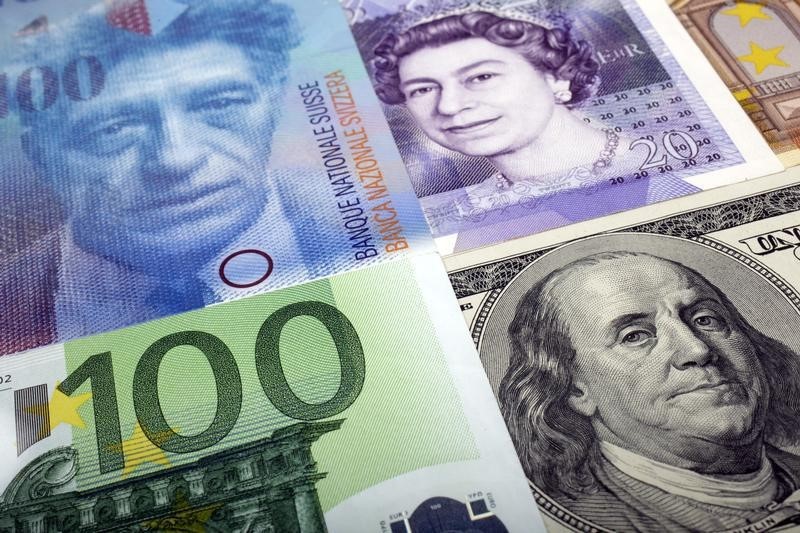Forex
Dollar edges lower; Fed meeting looms large


© Reuters.
Investing.com – The U.S. dollar edged lower in early European trade Monday, in thin holiday-affected volumes as traders continued to digest last week’s mixed U.S. jobs report and the possible impact on thinking at the Federal Reserve ahead of this month’s policy-setting meeting.
At 02:55 ET (06:55 GMT), the Dollar Index, which tracks the greenback against a basket of six other currencies, traded 0.1% lower at 104.075, remaining close to last week’s two-month peak of 104.44.
Jobs report adds to ‘soft landing’ narrative
Friday’s jobs report offered up a mixed picture – picked up more than expected in August, but the U.S. economy created 110,000 fewer jobs than previously reported in June and July, the jumped to 3.8%, while gains moderated.
Importantly, there was a huge 736,000 jump in the workforce, which provided hope that an expansion in labour supply could further ease wage pressures even while hiring stays strong.
Traders have tended to read into this that the Fed will stand pat with its monetary policy later this month, weighing on the dollar.
That said, this also added to the impression the U.S. economy is cooling without slowing sharply, reinforcing hopes that the economy is set for a soft landing – a view that could support the greenback longer term as the economies in Europe, as well as Asia, struggle.
Data released this week is unlikely to substantially change the market’s view, but traders will also get the chance to hear from several Fed speakers, including Dallas Fed President Lorie , who speaks Wednesday followed a day later by appearances from New York Fed President John , Governor Michelle , Governor Michael Barr and Chicago Fed President Austan .
Euro edges higher; Lagarde set to speak
rose 0.2% to 1.0794, with the pair helped by the weakness in the dollar even as fell 0.9% on the month in July as global demand continues to falter.
European Central Bank President is scheduled to speak later in the session, and her comments will be studied carefully for clues ahead of this month’s policy-setting meeting.
There is a great deal of uncertainty surrounding the ECB’s next policy decision, with inflation remaining way above target but with eurozone growth weaker than predicted just a few months ago.
Yuan still weak ahead of data releases
rose 0.1% to 7.2677, with the yuan remaining weak as data out of China in the coming week is likely to indicate that the economic recovery in the world’s second largest economy remains fragile.
The for August is due on Tuesday and is expected to show the expansion in the service sector slowing slightly last month, while trade data on Thursday is forecast to show that and contracted again in August from a year earlier.
Elsewhere, rose 0.2% to 1.2614, while traded largely flat at 146.19, while rose 0.4% to 0.6473, ahead of Tuesday’s meeting, which is widely expected to result in the central bank holding interest rates at an over 10-year high, given recent signs of cooling inflation and employment.

 Forex3 years ago
Forex3 years agoForex Today: the dollar is gaining strength amid gloomy sentiment at the start of the Fed’s week

 Forex3 years ago
Forex3 years agoUnbiased review of Pocket Option broker

 Forex3 years ago
Forex3 years agoDollar to pound sterling exchange rate today: Pound plummeted to its lowest since 1985

 Forex3 years ago
Forex3 years agoHow is the Australian dollar doing today?

 Cryptocurrency3 years ago
Cryptocurrency3 years agoWhat happened in the crypto market – current events today

 World3 years ago
World3 years agoWhy are modern video games an art form?

 Commodities3 years ago
Commodities3 years agoCopper continues to fall in price on expectations of lower demand in China

 Economy3 years ago
Economy3 years agoCrude oil tankers double in price due to EU anti-Russian sanctions























